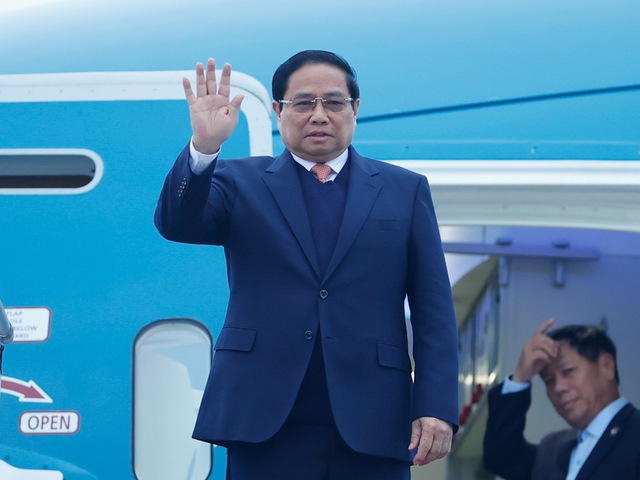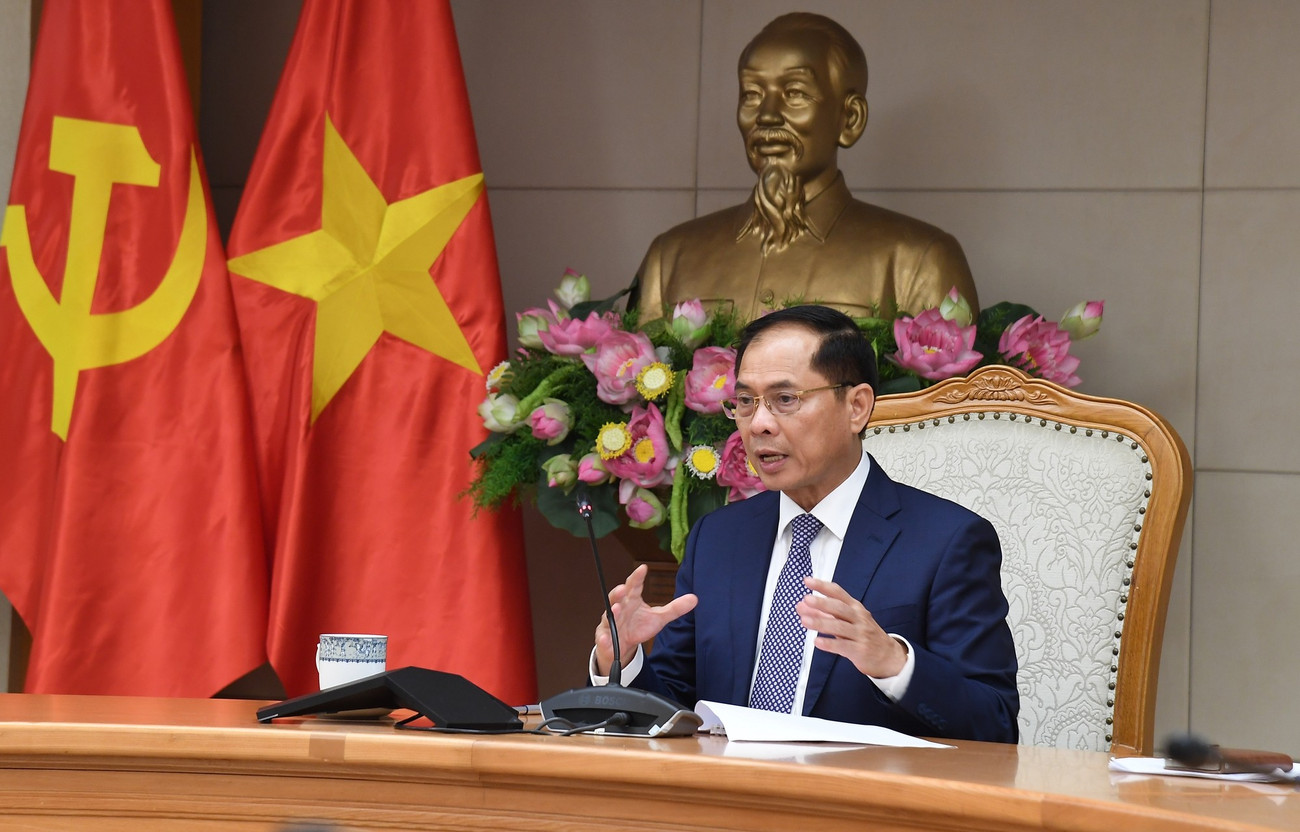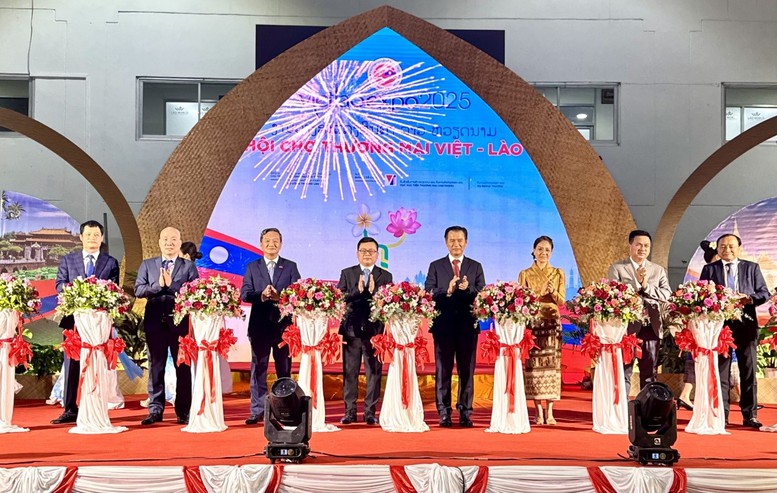MOIT VIETNAM | Vietnam and Laos Accelerate Toward Deeper Regional Integration and Unprecedented Trade Growth
/ News / Activities
Vietnam and Laos Accelerate Toward Deeper Regional Integration and Unprecedented Trade Growth
In an era where regional connectivity and economic resilience are critical pillars for national development, Vietnam and Laos are emerging as a model of strategic cooperation and enduring friendship. The most compelling evidence of this momentum lies in the remarkable 100.4% increase in bilateral trade over the first five months of 2025—reaching USD 1.6 billion, a figure that reflects not only commercial vigor but also the fruits of long-term diplomatic vision and infrastructural collaboration.
.jpg)
A Relationship Rooted in History, Driven by Vision
The Vietnam–Laos relationship is unlike most. Forged in the crucible of shared revolutionary struggle, it has matured into a multifaceted partnership grounded in mutual trust, ideological kinship, and complementary strategic interests. Over the decades, the relationship has grown from wartime alliance to post-war reconstruction, and now to a strategic alliance spanning economics, infrastructure, defense, culture, education, and diplomacy.
The deepening of economic ties is not accidental—it is the result of consistent political will, visionary policymaking, and increasingly well-coordinated frameworks for connectivity, trade facilitation, and investment alignment. It also reflects a broader regional context: Southeast Asia is rapidly transforming into a global supply chain hub, and Vietnam–Laos cooperation positions both countries to benefit from this evolution.
The Game-Changing Role of Vũng Áng Port: Laos's Gateway to the World
A particularly transformative milestone in 2025 has been the operationalization of Wharf No. 3 at Vũng Áng Port in Hà Tĩnh province. For landlocked Laos, this infrastructure project is a strategic breakthrough. It not only offers access to the East Sea but also streamlines transit trade routes to international markets, lowering logistics costs and reducing export-import times.
The port, developed through Vietnam–Laos joint investment and technical cooperation, is emblematic of the broader strategic vision to connect Laos more deeply to regional and global trade networks. This includes plans for integrated customs procedures, expanded road and rail links to the Lao hinterland, and logistics hubs along the border that enhance supply chain fluidity.
Beyond trade, the port symbolizes Vietnam’s commitment to inclusive regional development, positioning itself as a bridge for its neighbors—not merely a gateway for its own growth.
High-Level Diplomacy: A Strategic Dialogue for Comprehensive Development
During the sidelines of the 58th ASEAN Foreign Ministers’ Meeting in Kuala Lumpur, Malaysian capital, Vietnamese Deputy Prime Minister and Foreign Minister Bùi Thanh Sơn and Lao Foreign Minister Thongsavanh Phomvihane held a pivotal bilateral meeting on July 8. The discussion served as both a reaffirmation of traditional solidarity and a forward-looking dialogue on how to convert political trust into long-term, mutually beneficial outcomes.
Both sides noted that political trust—built over generations of struggle and cooperation—has been preserved and continuously strengthened through frequent high-level exchanges, strategic visits, and joint mechanisms. These include defense-security dialogues, economic planning committees, and cultural-educational exchange platforms.
The ministers were particularly pleased with the positive trade trajectory and emphasized the importance of staying on course to meet or even surpass the target of USD 5 billion in bilateral trade in the near future. Key sectors identified for growth include renewable energy, digital economy, cross-border tourism, agro-processing, and logistics services.
A Shared Calendar of Symbolic Anniversaries and Deeper Cooperation
Looking ahead, the two countries are preparing for a landmark series of historical celebrations that highlight their intertwined destinies:
- The 80th anniversary of the August Revolution (August 19, 1945 – August 19, 2025)
- The 80th anniversary of Vietnam’s National Day (September 2, 1945 – 2025)
- The 50th anniversary of the Lao National Day (December 2, 1975 – 2025)
- The 105th birth anniversary of President Kaysone Phomvihane, founding father of modern Laos (December 13, 1920 – 2025)
These commemorations are not only ceremonial—they are strategic opportunities to reinvigorate public diplomacy, promote cultural ties, and reaffirm political solidarity to domestic and international audiences alike.
Minister Phomvihane confirmed that the Lao military would once again participate in Vietnam’s major celebrations, following their symbolic appearance at the 50th anniversary of Vietnam’s reunification in April 2025. This underscores the defense ties and symbolic brotherhood that continue to underpin broader cooperation frameworks.
.jpg)
A Strategic Cooperation Framework for the Decades Ahead
The two sides agreed to:
- Fully implement the Vietnam–Laos Cooperation Agreement for 2021–2025
- Accelerate the negotiation of a new 5-year cooperation roadmap post-2025
- Maximize the effectiveness of established mechanisms such as ministerial-level political consultations and deputy minister-level policy dialogues
- Deepen collaboration between their Ministries of Foreign Affairs to support sub-regional, bilateral, and multilateral objectives
This institutional architecture will be key to sustaining long-term cooperation and ensuring that momentum is not lost amidst leadership transitions or shifting global dynamics.
People-Centered Development: Education, Culture, and the Next Generation
Beyond economics and diplomacy, the Vietnam–Laos relationship is also powered by people. Cross-border communities, students, young professionals, cultural workers, and business leaders are increasingly at the forefront of bilateral engagement. Vietnam has provided thousands of scholarships, training fellowships, and technical assistance to Lao students and officials, a move widely recognized as a strategic investment in human capital.
Friendship associations, youth unions, and universities are playing a crucial role in preserving the legacy of unity and ensuring the spirit of "Chí tình – Chí nghĩa – Đồng chí – Anh em" is passed down to the next generation—not only as history, but as future action.
Broader Regional Dynamics: Lessons for ASEAN Unity and Connectivity
The Vietnam–Laos dialogue took place in a wider context of evolving regional geopolitics. In parallel meetings, Vietnam’s foreign minister also met with Thai Foreign Minister Maris Sangiampongsa, underscoring the regional dimension of Vietnam’s diplomacy.
The Vietnam–Thailand meeting touched on:
- The implementation of the Vietnam–Thailand Comprehensive Strategic Partnership
- Joint efforts to reach USD 25 billion in trade
- The launch of an Action Plan for 2026–2030
- Cooperation in digital transformation, green energy, food security, and tourism connectivity
The two countries also reaffirmed mutual non-interference principles, emphasizing that no party would allow its territory to be used against the other—a timely reminder in an era of rising regional tension.
On the subject of Thailand–Cambodia tensions, Vietnam reiterated its support for peaceful dialogue and encouraged all ASEAN members to work towards unity, regional stability, and collaborative prosperity.
Conclusion: From Shared History to Shared Prosperity
The extraordinary trade growth between Vietnam and Laos is more than a numerical milestone—it is a manifestation of strategic alignment, infrastructure investment, and the timeless values of mutual support and solidarity. As both countries stand on the threshold of major national anniversaries, their relationship offers lessons not only in friendship, but in how historical bonds can be strategically harnessed for sustainable, future-facing development.
With deeper cooperation across ports, roads, energy, education, and diplomacy, Vietnam and Laos are proving that geography may limit a nation’s position, but not its possibilities—especially when backed by trusted friends and visionary leadership.
As they move forward—together—they are not just strengthening bilateral ties. They are redefining regional connectivity and setting a new standard for ASEAN solidarity in the 21st century.
-
/ News / Activities
Prime Minister Pham Minh Chinh’s Strategic Visit to Laos Marks New Chapter in Bilateral Relations
Prime Minister Pham Minh Chinh’s official visit to the Lao People’s Democratic Republic and his co-chairmanship of the 47th meeting of the Vietnam–...
-
/ News
Deepening Cooperation, Strengthening Regional Unity
On the afternoon of July 28, 2025, at the Government Headquarters in Hanoi, Deputy Prime Minister and Minister of Foreign Affairs of Vietnam, Mr. B...
-
/ News / Activities
Vietnam and Laos Deepen Economic Collaboration Through VIETLAO EXPO 2025
On July 17, 2025, the vibrant city of Vientiane, capital of the Lao People's Democratic Republic, became the focal point of regional economic coope...





